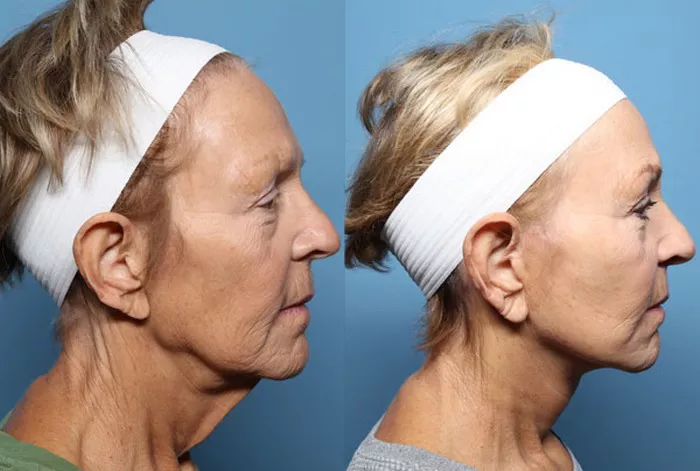Cosmetic surgery has gained popularity as a means to enhance one’s appearance and boost self-confidence. While most cosmetic procedures are considered safe when performed by qualified professionals, it is important to understand that all surgeries carry potential risks and complications. In this article, we will explore what is considered the riskiest cosmetic surgery, examining the procedures that have higher risks compared to others.
Understanding the Risks of Cosmetic Surgery
Before delving into the riskiest cosmetic surgery procedures, it is crucial to note that the level of risk associated with any surgery can vary depending on several factors, including the patient’s overall health, the surgeon’s expertise, the surgical technique used, and individual response to anesthesia. All surgical procedures carry inherent risks, such as bleeding, infection, scarring, and adverse reactions to anesthesia. However, some cosmetic surgeries may have a higher likelihood of complications compared to others.
Risky Cosmetic Surgery Procedures
While each individual’s experience may differ, the following cosmetic surgery procedures are generally considered to have a higher level of risk and potential complications:
-
Abdominoplasty (Tummy Tuck)
Abdominoplasty, commonly known as a tummy tuck, is a surgical procedure performed to remove excess skin and fat from the abdomen and tighten the abdominal muscles. This procedure involves a significant incision and carries risks such as infection, blood clots, poor wound healing, and the potential for adverse reactions to anesthesia. The extent of the surgery and the individual’s overall health can affect the risk level.
-
Rhinoplasty (Nose Job)
Rhinoplasty is a surgical procedure to reshape and modify the nose’s appearance and structure. While rhinoplasty is generally safe, it carries risks such as bleeding, infection, breathing difficulties, scarring, and dissatisfaction with the aesthetic outcome. The complexity of the procedure and the skill of the surgeon can impact the risk level.
-
Breast Augmentation
Breast augmentation is a surgical procedure to increase breast size and improve shape using implants or fat transfer. While breast augmentation is a common and relatively safe procedure, it carries risks such as infection, capsular contracture (scar tissue formation around the implant), implant rupture, changes in nipple or breast sensation, and dissatisfaction with the aesthetic outcome. The choice of implant type, implant placement, and surgical technique can influence the risk level.
-
Liposuction
Liposuction is a surgical procedure to remove excess fat deposits from specific areas of the body. It involves the use of a suction device inserted through small incisions. While liposuction is generally safe when performed by a qualified professional, it carries risks such as infection, bleeding, skin irregularities, contour irregularities, and fluid imbalance. The extent of the procedure, the amount of fat removed, and the individual’s overall health can impact the risk level.
-
Facelift
A facelift, or rhytidectomy, is a surgical procedure aimed at reducing signs of aging in the face and neck. It involves tightening the facial tissues and removing excess skin. Facelift surgery carries risks such as infection, hematoma (collection of blood under the skin), nerve damage, scarring, and dissatisfaction with the aesthetic outcome. The extent of the surgery and the individual’s overall health can affect the risk level.
Mitigating the Risks
While these cosmetic surgeries carry certain risks, it is important to note that they are performed successfully on numerous patients every year. To minimize the risks associated with cosmetic surgery, consider the following:
-
Choose a Qualified Surgeon
Select a board-certified plastic surgeon with experience and expertise in the specific procedure you are considering. A skilled surgeon can reduce the likelihood of complications and ensure optimal results.
-
Undergo a Comprehensive Evaluation
Before proceeding with any cosmetic surgery, undergo a thorough evaluation of your overall health and discuss any pre-existing medical conditions or medications with your surgeon. This evaluation will help identify potential risk factors and ensure you are a suitable candidate for the procedure.
-
Follow Pre- and Post-Operative Instructions
Adhere to the pre-operative guidelines provided by your surgeon, such as avoiding certain medications or supplements that may increase the risk of bleeding. Additionally, follow all post-operative instructions, including proper wound care, taking prescribed medications, attending follow-up appointments, and avoiding strenuous activities as advised.
-
Manage Expectations
Have realistic expectations about the outcome of the procedure. Cosmetic surgery can enhance your appearance, but it cannot completely change your life or solve underlying psychological issues. Communicate openly with your surgeon about your goals and ensure you have a clear understanding of what can be achieved.
-
Consider Non-Surgical Alternatives
In some cases, non-surgical cosmetic procedures, such as injectables or non-invasive skin tightening treatments, may provide satisfactory results with lower risks and minimal downtime. Discuss these alternatives with your surgeon to determine if they are suitable for your goals.
Conclusion
While all surgical procedures carry inherent risks, some cosmetic surgeries have a higher likelihood of complications compared to others. Procedures such as abdominoplasty, rhinoplasty, breast augmentation, liposuction, and facelifts are considered to have a higher risk level. However, it is important to note that these procedures are routinely performed with successful outcomes. By selecting a qualified surgeon, undergoing a comprehensive evaluation, following pre- and post-operative instructions, and managing expectations, you can minimize the risks associated with cosmetic surgery and increase the likelihood of achieving your desired results.


